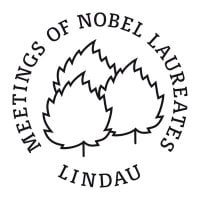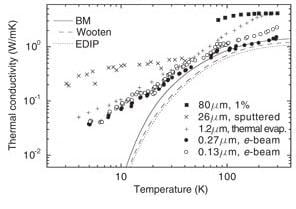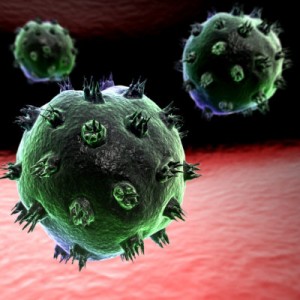Background
The Large Hadron Collider (LHC) is of interest to astronomers because elementary particles are thought related to Big Bang cosmology through dark matter and energy in an expanding Universe. Indeed, the recent Lindau Meeting discussed the topic “Dark Matter, Dark Energy, and the LHC.” See http://www.lindau-nobel.org/PublicMeetingProgram.AxCMS?M …
Scientists George Smoot and John Mather who won the Nobel prize for the Cosmic Background Explorer were joined by physicists David Gross, Carlo Rubbia, Gerard t’Hooft, and Martinus Veltman. Consistent with the theme of the Lindau Meeting on cosmology, Nobel Laureate George Smoot stated:
“The properties of the tiniest particles should dictate what the Universe looks like…”
Meeting Discussion
With regard to dark matter, Smoot himself did not follow through by describing the mechanism by which tiny particles dictate what the Universe looks like, yet claimed cosmologists can model the Universe with gas, photons, and neutrinos giving a Universe of mostly dark matter of which only about 27 percent is visible, while dark energy is expanding the Universe at an accelerated rate. See http://arstechnica.com/science/news/2010/07/astronomy-an …
Introducing himself as “I’m a measuring kind of guy,” Mather also ignored Smoot’s comment avoiding the mechanism by which tiny particles dictate what we observe in the Universe and instead discussed how astronomers were pinning down the properties of dark matter by gravitational lensing surveys that quantity the distribution of dark matter in the Universe. Ibid
Only Veltman called dark matter “bullsh*t,” but then like Smoot and Mather did not identify the mechanism of how Smoot’s tiny particles dictate what we see and instead proposed an alternative dark matter candidate MOND (Modified Newtonian Dynamics). Only Rubbia connected with Smoot’s statement by suggesting the tiny particles are Weak Interacting Massive Particles (WIMPs) of dark matter in sterile neutrinos, a heavy version of the three familiar flavors of this particle. Ibid
Cosmic Dust
Cosmology is only beginning to recognize that redshift in submicron cosmic dust significantly alters how the Universe looks to us. Redshift in cosmic instead of by the Doppler effect allows one to entertain the cosmology of a static Universe without any need for dark matter and energy. Given that our knowledge of the Universe by seeing is unequivocally altered by absorption in cosmic dust, Smoot’s comments may be rephrased by:
”The properties of cosmic dust should dictate what the Universe looks like…”
Yet the Lindau Meeting excluded discussion on cosmic dust in cosmology, instead focusing on dark matter based on the anticipated discovery of exotic WIMPs from the LHC experiments. But cosmic dust is of greater importance to cosmology because light from a distant galaxy is redshift upon absorption in cosmic dust without the Doppler shift. Therefore, the redshift Hubble measured in 1929 was most likely caused by cosmic dust having nothing to do with an expanding Universe. Hence, there is no need for dark energy to explain an expanding Universe that is not expanding. Moreover, MOND and surveys of gravitational lensing that support the presence of dark matter are also negated by cosmic dust. See http://www.nanoqed.org at “Dark Energy and Cosmic Dust” and “Reddening and Redshift,” 2009; and “Cosmology by Cosmic Dust -Update,” 2010.
QED induced Redshift in Cosmic Dust
QED induced redshift in cosmic dust is a consequence of QM constraints placed on the conservation of absorbed energy in submicron particles. QED stands for quantum electrodynamics and QM for quantum mechanics. QM precludes submicron cosmic dust particles (DPs) from having the specific heat capacity necessary to conserve absorbed galaxy photons by an increase in temperature. Instead, conservation proceeds by the creation of QED photons from the total internal reflection (TIR) confinement of the absorbed galaxy photon within the solid DP. But the TIR allows those QED photons normal to the DP surface to leak out redshifted relative to the absorbed galaxy photon – all of this occurring without the Universe expanding. Ibid
How DPs redshift galaxy light may be understood from QM by the QED induced creation of photons of wavelength Lo by supplying EM energy to a QM box with walls separated by Lo/2. For a galaxy photon absorbed in a spherical DP of diameter D, the QED photons are created at a wavelength Lo = 2nD, where n is the index of refraction. In the Universe, the DPs are generally amorphous silicate having n = 1.45 and diameters D < 0.5 microns. For D = 0.25 microns, the QED created photons has Lo = 0.745 microns, and therefore an absorbed Lyman-alpha photon having L = 0.1216 microns is redshift to Z = (Lo – L)/L. ~ 5. If the QED redshift in DPs is interpreted by the Doppler shift, the galaxy recession velocity is 95 % of the speed of light when in fact the galaxy is not receding at all. Ibid
Conclusions
QED induced redshift holds in question the Hubble redshift as proof the Universe is expanding beginning with the Big Bang suggesting a return to a static Universe in dynamic equilibrium once proposed by Einstein. Moreover, astrophysical measurements that rely on Hubble redshift by the Doppler effect grossly over-estimate the rotational velocities of spiral galaxies are far faster than allowed by Newtonian mechanics, thereby suggesting the presence of dark matter to hold the galaxies together. Indeed, redshift in cosmic dust instead of by the Doppler effect answers most of the outstanding problems in cosmology Ibid. The conclusions are.
Dark Energy not needed to explain a Universe that is not expanding
Period-luminosity relation qualified in Cepheid stars
Dark Matter not involved in Gravitational Lensing
Galaxy Rotation Problem resolved without Dark Matter
No need for MOND to explain Galaxy Rotation Problem
Tolman Surface Brightness reduction by (1 + Z)
Explain the Independence of Redshift in Sunyaev-Zeldovich Effect
Light Curve dilation in Supernovae Explosions
The Lindau Meeting on cosmology by elementary particles is trumped by cosmic dust. There is no connection between any findings forthcoming from the LHC on how WIMPS or other exotic particles are related to dark matter. Smoot’s comment on how tiny particles dictate what the Universe looks like was misinterpreted by all of the attendees including Smoot himself because no one considered the tiny particles to be submicron cosmic dust. Hubble’s redshift by the Doppler Effect held for 80 years needs to be set aside and superseded by QED induced redshift in cosmic dust, an unpleasant, but necessary action by astronomers if cosmology is to move forward.




